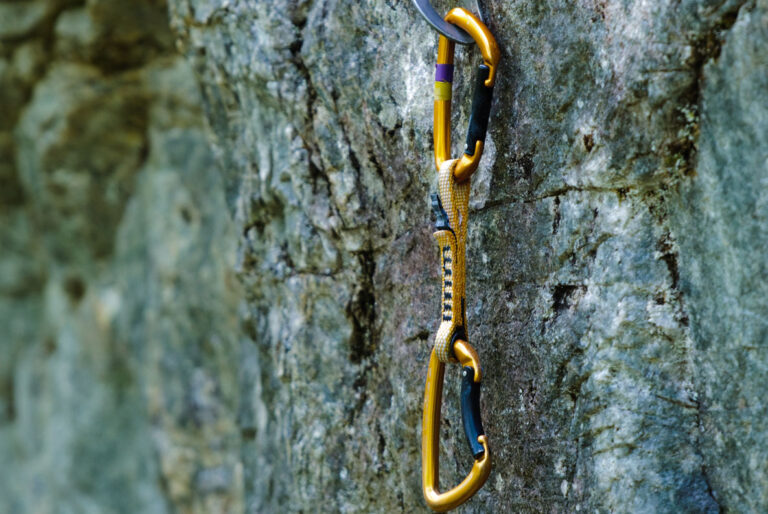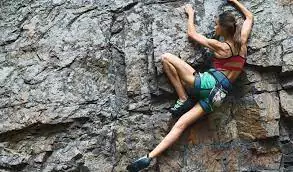What Does Beta In Climbing? Definition & OriginTo Grade
If you’re new to rock climbing or rock climbing, you’ll hear a lot of new terms in the gym and in videos you can watch. One of the most common escalation terms is “beta.” Can be used in sentences like “Do you want a trial? ” Or “I will use the trial version.”
So what does beta mean in climbing? We will see…
What does “beta” mean in climbing?
What Does Beta In Climbing: Beta is a climbing term used to obtain information about a climbing problem or a climbing route that might be useful for climbing.
For example, at a climbing gym, an experienced climber might approach you after seeing that you’re struggling and ask, “Would you like to try it?”
In this case they will probably show you the correct starting position or even send you the complete problem.
If you’re trying to complete a climbing challenge right after completing another climb, you’re probably using the beta version to complete the climb yourself.
Although beta slang is very popular in climbing, the term is also widely used in all other aspects of climbing.
Essentially, every time a climber talks to you about a particular route or climbing problem, he’s giving you his beta.

How did the term “beta climber” come about?
Interestingly, the term “Beta” has nothing to do with the second Greek letter, but comes from a video cassette format called “Betamax”.
When Betamax tapes were still in use (late 1970s to early 1980s), Betamax tape was often shortened to simply “Beta”. While we recorded our routes on GoPro, the climbers recorded themselves with Betamax cameras.
The person best known for popularizing the term “beta” is the late climber Jack Mileski, who recorded his climbs on Betamax video.
In an interview with Kansas City 5.12 in Shawangunks, New York, Jack reportedly told his friend Mike Freeman: “Let me play you a Betamax tape” and “So Mike, here’s the demo!” “.
Hence the term escalation. In the 1980s, Betamax tapes were used to record climbs.
I can imagine Jack carefully inserting his beta tape from Kansas City into a Betamax recorder and then showing the footage to Freeman on a 4:3 TV.
Is Beta use too bad?
There is nothing wrong with using a trial version to post a problematic route or rocks. Most climbers use a trial version when submitting.
I would even say that using a trial version is a good thing. This requires climbers to socialize with others on an indoor climbing wall or in the gym. If a climber doesn’t know how to report a problem, he can ask another climber to post his beta.
This is a great way to socialize and meet other climbers. No climber will get angry when someone approaches them and asks them to try. It’s almost a form of respect. It’s like, “Hey, I saw you climbing, I feel like I can learn from you.” In other words, it is pleasant for the climber.
The trial version cannot be used unless you are trying to demonstrate it. Presentation is a term used to describe a transfer without prior information. If you use the trial version, the offer is destroyed.
What is Beta Spray?
Beta Spray is the process of transmitting pitta without asking the recipient for that information.
A typical example is a random climber below telling you what to do next. This is considered beta spray and is not always welcome.
Some climbers may attempt to realize a visionary project, and when Pitta is sprayed on them, the visionary process can no longer be called insight and is therefore virtually destroyed.
Here’s a climbing rule: Never spray cockerel on another climber unless they ask you to.
However, it is perfectly acceptable to ask a climber, “Can I give you a beta?” » Before sending the requested information.
Even though rock climbing is a social sport and can make you feel “cool”, spraying cockerels is never a good thing. Ask first and then provide a demo.
What should you do if someone is spraying beta?
If you find yourself in a situation where another climber is giving you your beta without your consent, the best thing to do is to politely tell him or her that you want to find out for yourself. In most cases, they will get the note and move on.
Some climbers don’t realize that spraying Bettas is harmful. There is no need to scold them for this.
If for some unexpected reason they continue to spray your betta, you can report the problem with that particular climber to a staff member. Spraying bettas against your will is nuisance and will not be tolerated in a climbing gym. By reporting them, they will likely receive a warning from staff and a possible ban if they somehow continue their toxic behavior.
What is a “spraying beta”?
A beta break is a term used when a climber presents a challenge using an alternative route. In many cases, this means missing movements in the arms and legs. Passing the beta can make the journey much easier or more difficult than expected.
Although pitta breakdown occurs most often indoors, it also occurs outdoors. They usually stop beta testing to suggest downgrading a track.
Example of a new beta causing a downgrade
The new beta version will definitely be able to reduce the load. A very popular downgrade option is to go back to the “starter” version of Adam Ondra. The first to promote the newcomer was Stefano Ghisolfi, who offered him the grade of 9a+. Adam Ondra then downgraded the route to 9a, finding that the knee bar allowed him enough rest to lighten the load.
You can watch the infamous kneebar that led to his demotion below.
But in addition to the downgrade, leaving the beta can also lead to an upgrade.
Example of a new beta causing an update
Daniel Woods upgraded the rating from V16 (“Sleepwalker”) to V17 (“The Sleepwalker Returns”), adding a very strange opening.
Here’s how it happened…
Daniel Woods was the second climber sent to Sleepwalker, a Class 9b (V16) rock challenge in Rock Rocks, Nevada. You can watch the expedition in the video below.
But breaking the beta and adding an extra twisty start to the same stone problem, Daniel Woods submitted 9a (V17) thus becoming the second person to submit stone 9a. The problem was later called “the return of the sleepwalker”.
Can there be more than Beta?
Of course, most methods and rock activities may require several attempts.
For example, short people (like me) might have a different beta for a particular problem than tall people. We often have to adapt to someone else’s beta. We can add a heel hook to completely change the demo.
There is no one way to present a rock release or song.
Although many climbers consider “beta” to be the most effective way to represent a route, this is not the true meaning of “beta”. Just because you’re using an alternative technology to send the route doesn’t mean your beta is wrong.







